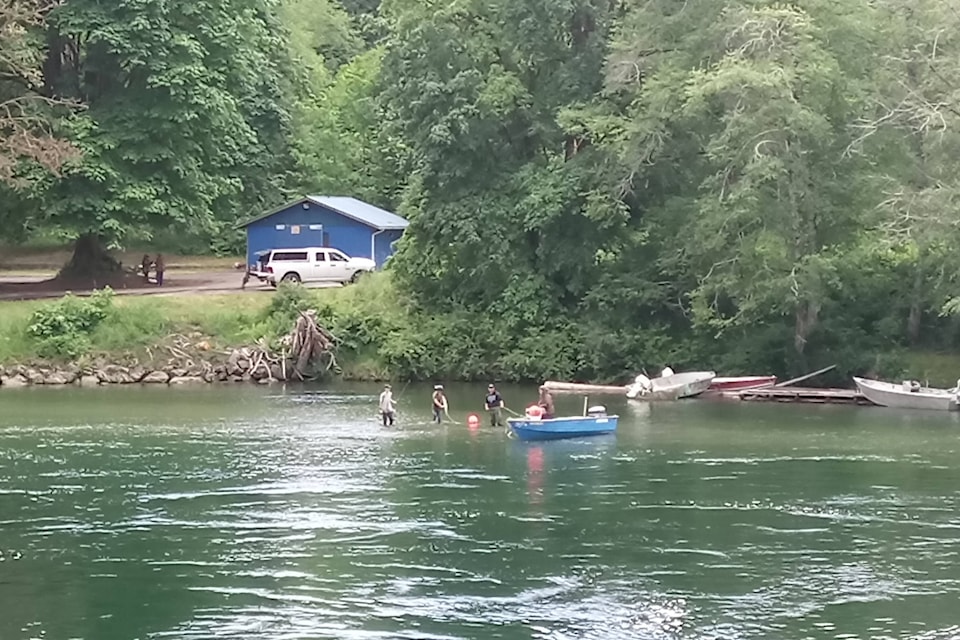BY MIKE YOUDS
Special to the News
Mediocre best describes the Somass River sockeye fishery this season, said Dave Rolston, Tseshaht First Nation fisheries manager.
That’s doubly disappointing for a fishery that was supposed to make up for a lean sockeye season prematurely shut down to conserve the Great Central Lake stock in 2018.
“I think people were expecting more opportunities with the original run size,” Rolson said. “It’s definitely changed things.”
DFO downgraded its run size estimate late last week after a seine test fishery indicated there were just 8,000 sockeye beyond 10 Mile Point and 5,000 inside. The run is now projected to reach 200,000 sockeye returning to the river, far short of the pre-season estimate of 350,000 to 500,000.
Somass sockeye were supposed to be one of only three B.C. sockeye runs to improve this year, the other two being the west coast of the Island and the Skeena River.
As a result of the low return, openings have been few. Quotas have been reduced for First Nation commercial and community fisheries. The Somass Park sports fishery was closed July 5 and the Area 23 recreational sockeye fishery was closed Sunday.
At this point, there are no Hupacasath, Tseshaht or Maa-nulth fisheries planned.
Although there are multiple challenges confronting the productivity of the Somass watershed, Rolston suspects the cause of depressed returns lies offshore.
“If I had to peg one cause, it would be the marine survival rate,” he said. “It may have something to do with the so-called Blob.”
The Blob, a huge mass of warm water off the coast of North America, was first identified six years ago. First thought to have subsided in 2016, the phenomenon resurfaced and may continue to affect plankton production.
Average weight of the returning sockeye has declined from the normal five to seven pounds to between four and 4.5, he noted. “Obviously they’re not getting enough to eat.”
Due to the difficulty in tracking migratory stocks, it is difficult to conclusively determine the cause of the run’s decline, Rolston said. While low water levels have been a concern due to a prolonged drought, river temperatures haven’t reached a point where they may cause in-stream fish mortality.
Usually, a Tseshaht freezer allocated for community purposes and ceremonial uses is filled with as many as 500 sockeye at this point.
“I don’t think we have any in the freezer this year,” Rolston said.
There remains the hope that other fisheries will help fill the gap. Springs are forecast to return in record numbers.
